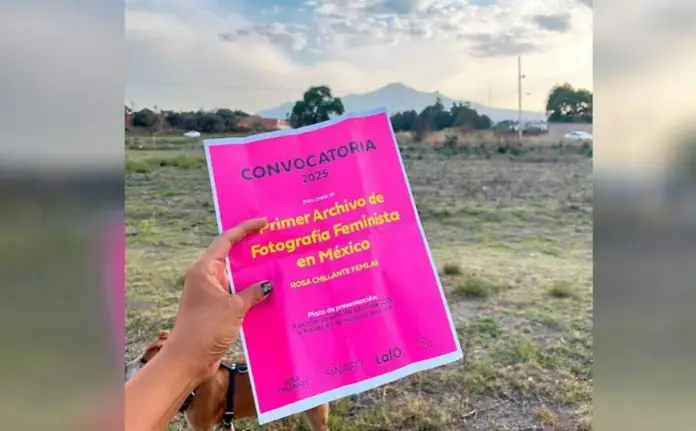From Tlaxcala, the project for the First Feminist Photography Archive in Mexico is being prepared. It will bring together the work of 25 Mexican photographers who, through images, address the issues faced by women in our country simply because of their gender.
This archive is a proposal by Rosa Chillante, a feminist photography laboratory comprised of photographers Carol Espíndola and Greta Rico, who seek to reduce the gender gaps that persist in art history.
Carol Espíndola, based in Tlaxcala, and Greta Rico, based in Mexico City, realized the need to create an archive for research, dissemination, and outreach purposes that would contribute to the recognition of imagery created by women and with themes that highlight the issues that persist in gender equality.
Although there are some initiatives by various feminist artists who have their own archives of personal work, there has not been a call for submissions seeking to collectively create an archive. That’s why we conceived it as the first feminist photography archive in Mexico.
The call opened on March 8th and closed on April 14th. It was aimed at Mexican women photographers whose work depicts themes related to the situation of women in different spheres of public and private life.
The selection process for the 25 photographs that will be included in the archive is currently underway. The selection will be channeled to the National Photo Library, the main institution safeguarding our country’s visual memory.
The selection will be made from a total of 200 photographers who responded to Rosa Chillante’s call, whose work reflects the different facets of being a woman.
“These are photographs that reflect, for example, understudied medical issues, such as endometriosis; diseases that traditionally aren’t fully studied by medicine and aren’t treated as they should be due to the bias of machismo and the view that the male body dictates measures, medicines, and studies,” stated Carol Espíndola.
We will also find images alluding to femicides, cases of abuse, and harassment; as well as those related to women’s demonstrations, marches, and political and public actions; single mothers and caregiving issues that focus on women; and the various inequalities that women experience in the political, economic, and domestic spheres.
The Tlaxcalan photographer emphasized that this archive will be the first of its kind in Mexico. “There are many women’s initiatives that are creating exhibitions and books, but as such, there was no archive of feminist photography, and we wanted to do this project because what remains for posterity are the documents, what we see in museums, what we have in the archives,” she stated.
Data from 2022, presented by researcher and curator Karen Cordero, indicates the percentages of works by women in seven of the main museums in Mexico: MUAC, 25%; Museo JUMEX, 20.18%; MAM, 16.65%; Museo Kaluz, 15.12%; Museo Tamayo, 14.61%; Museo de Arte Carrillo Gil, 11.95%; MUNAL-INBAL, 9.70%; Museo Nacional de San Carlos, 1.70%. In no case is parity achieved, and women continue to be underrepresented.
Source: oem




